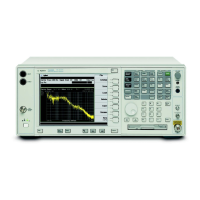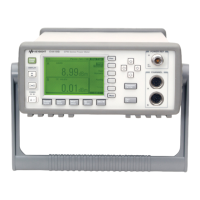66 Chapter 3
Making Measurements
Frequency Counter Measurement
Frequency Counter Measurement
The Frequency Counter measurement is used to determine the center frequency of
an unmodulated RF carrier, or of a CW audio signal. It is the default measurement
of the personality, and its result is used in many subsequent measurements.
Therefore, connection setup and execution of this measurement is important to
assure good results for follow-on measurements.
This procedure describes how to make a Frequency Counter measurement. In this
measurement example, a signal generator is the UUT and is adjusted to deliver a
test signal. The Frequency Counter measurement is used to measure and display
the frequency of the signal.
If the nominal frequency of the signal under test is known, the Measuring Receiver
can be manually tuned to that frequency to make the Frequency Counter
measurements. Manual tuning is particularly useful if the signal level is so low that
automatic tuning may have difficulty finding the signal. Manual tuning also allows
faster measurements when the frequency of the input signal is much higher than
100 MHz.
CAUTION To make the Frequency Counter measurement, make sure you have turned off the
signal modulation. After measuring the carrier frequency, turn on the signal
modulation and continue making other modulation measurements.
NOTE You can make Frequency Counter measurements without a Power Meter since it is
the PSA that measures the RF Frequency.

